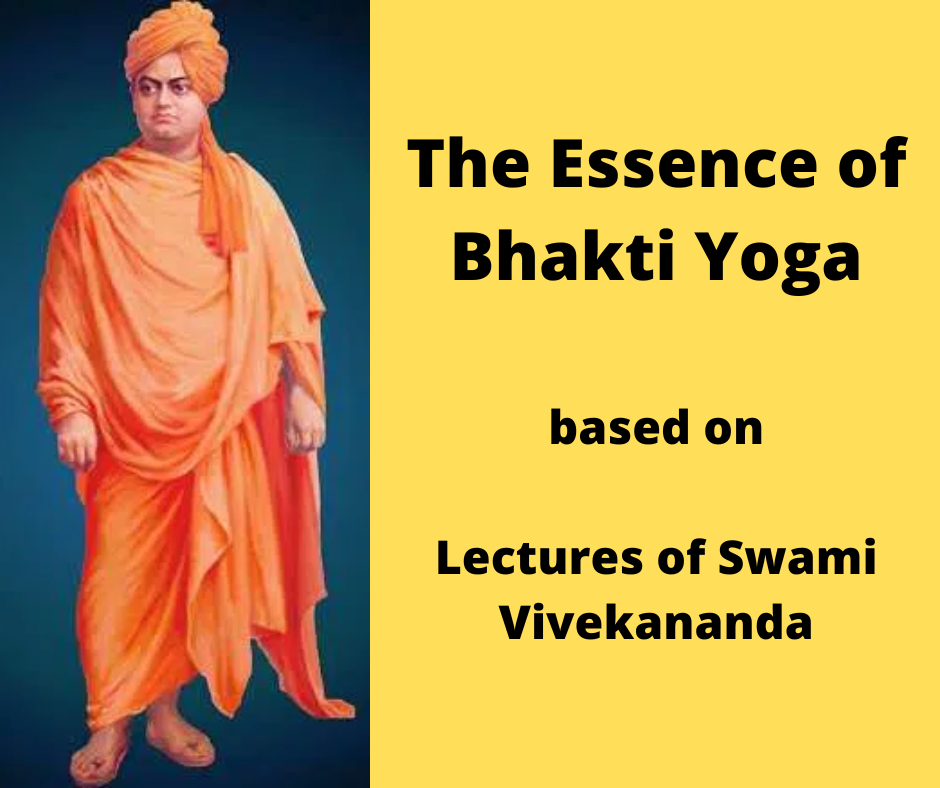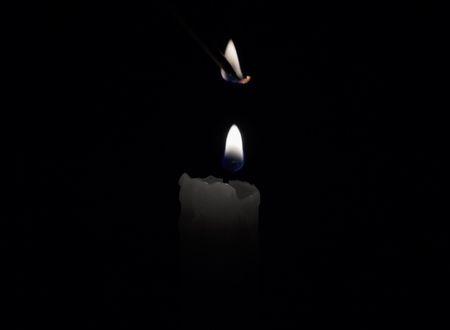Background
Recently, as part of teaching a course on Life & Works of Swami Vivekananda in 15 classes, I shared on Bhakti Yoga.
Swami Vivekanand gave two sets of lectures on Bhakti Yoga, and which were in
1. Complete Works of Swami Vivekananda – Vol 3, and with titles
Definition of Bhakti
The Philosophy of Ishvara
Spiritual Realisation, the aim of Bhakti-Yoga
The Need of Guru
Qualifications of the Aspirant and the Teacher
Incarnate Teachers and Incarnation
The Mantra: Om: Word and Wisdom
Worship of Substitutes and Images
The Chosen Ideal
2. Complete Works of Swami Vivekananda – Vol 4, and with titles
[These were taught in Jan 1896 – Vedanta Society, NY lecture]
The preparation
The first steps
The teacher of spirituality
The need of symbols
The chief symbols
The Ishta
Below is a summary of these in Swami Vivekananda’s own words as quotes/statements.
Concepts have been clubbed and put into sections/headings for easier understanding, and my commentary is there in brackets[].
What is Bhakti Yoga?
● Bhakti-Yoga is a real, genuine search after the Lord, a search beginning, continuing, and ending in love.
● One single moment of the madness of extreme love to God brings us eternal freedom.
● There is not really so much difference between knowledge (Jnana) and love (Bhakti) as people sometimes imagine. In the end they converge and meet at the same point.
Advantages & Disadvantages of Bhakti Yoga
- The one great advantage of Bhakti is that it is the easiest and the most natural way to reach the great divine end in view;
- Its great disadvantage is that in its lower forms it oftentimes degenerates into hideous fanaticism. This danger exists only in that stage of Bhakti which is called the preparatory (Gauni). All the weak and undeveloped minds in every religion or country have only one way of loving their own ideal, i.e. by hating every other ideal.
When Bhakti has become ripe and has passed into that form which is called the supreme (Parâ), no more is there any fear of these hideous manifestations of fanaticism; that soul which is overpowered by this higher form of Bhakti is too near the God of Love to become an instrument for the diffusion of hatred.
Stages in Bhakti Yoga
● Bhakti-Yoga, as we have said, is divided into the Gauni or the preparatory, and the Parâ or the supreme forms.
● In the preparatory stage, we unavoidably stand in need of many concrete helps to enable us to get on; and indeed the mythological and symbological parts of all religions are natural growths which early environ the aspiring soul and help it Godward. It is also a significant fact that spiritual giants have been produced only in those systems of religion where there is an exuberant growth of rich mythology and ritualism.
● Is not this seeing God, and feeling God, and enjoying God higher than everything else? Nay, Bhaktas have not been wanting who have maintained that it is higher than even Moksha — liberation. [ In this way Bhakti Yoga is the means and end in itself]
Jnana and Bhakti
● That character is of the noblest type in which all these three — knowledge and love and Yoga — are harmoniously fused. Three things are necessary for a bird to fly — the two wings and the tail as a rudder for steering. Jnana (Knowledge) is the one wing, Bhakti (Love) is the other, and Yoga is the tail that keeps up the balance.
● The Jnanis hold Bhakti to be an instrument of liberation, the Bhaktas look upon it both as the instrument and the thing to be attained.
● Each seems to lay great stress upon his own peculiar method of worship, forgetting that with perfect love, true knowledge is bound to come even unsought and that from perfect knowledge, true love is inseparable.
God/Brahman different or same?
● Are there then two Gods — the “Not this, not this,” the Sat-chit-ânanda, the Existence-Knowledge-Bliss of the philosopher, & this God of Love of the Bhakta?
[Ans: No, it is the same]
○ It always has to be understood that the Personal God worshipped by the Bhakta is not separate or different from the Brahman. All is Brahman, the One without a second; only the Brahman, as unity or absolute, is too much of an abstraction to be loved and worshipped; so the Bhakta chooses the relative aspect of Brahman, that is, Ishvara, the Supreme Ruler.
Bhakti can be directed towards Brahman, only in His personal aspect.
Preparedness of Student & Importance of Guru
● [Who is Guru] The shaping of our own destinies does not preclude our receiving help from outside; nay, in the vast majority of cases, such help is absolutely necessary. This quickening impulse cannot be derived from books. The soul can only receive impulses from another soul, and from nothing else.
● [Guru and Shishya] It is a mysterious law of nature that as soon as the field is ready, the seed must and does come; as soon as the soul earnestly desires to have religion, the transmitter of the religious force must and does appear to help that soul.
● [Precaution in finding a Guru] There are many who, though immersed in ignorance, yet, in the pride of their hearts, fancy they know everything, and not only do not stop there but offer to take others on their shoulders; and thus the blind leading the blind, both fall into the ditch.
● [How to identify realized teacher] – The sun requires no torch to make him visible, we need not light a candle in order to see him. When the sun rises, we instinctively become aware of the fact, and when a teacher of men comes to help us, the soul will instinctively know that truth has already begun to shine upon it.
Bhakti & Bhakti Yoga
● The best definition given of Bhakti-Yoga is perhaps in verse — “May that love undying which the non-discriminating have for the fleeting objects of the senses never leave this heart of mine — of me who seek after Thee!”
● [Bhakti Yoga is the means and end itself] Is not this seeing God, and feeling God, and enjoying God higher than everything else? Nay, Bhaktas have not been wanting who have maintained that it is higher than even Moksha — liberation.
● Bhakti is extreme love for God
● What can be a higher end than God? God Himself is the highest goal of man; see Him, enjoy Him. We can never conceive anything higher because God is perfection. We cannot conceive of any higher enjoyment than that of love, but this word love has different meanings. It does not mean the ordinary selfish love of the world.
● The sage says, “I will have that attachment, that tremendous clinging, only to Thee.”
This love, when given to God, is called Bhakti. Bhakti is not destructive; it teaches us that no one of the faculties we have has been given in vain, that through them is the natural way to come to liberation.
● The idea is we can have a strong attachment, only it should be transferred to the object beyond the senses, which is God.
Worship of Symbols & Idols
● Are the worship of Pratikas/Symbols or of things more or less satisfactory as substitutes for God, and the worship of Pratimâs/images?
● Where Brahman Himself is the object of worship, and the Pratika stands only as a substitute – the Pratika itself being idealised into the cause of all, Brahman — the worship is positively beneficial; nay, it is absolutely necessary for all mankind until they have all got beyond the primary or preparatory state of mind in regard to worship.
● The external part of Bhakti is absolutely necessary to help the soul onward. Man makes a great mistake when he thinks that he can at once jump to the highest state.
● I have to find my light, just as they found theirs. Their finding the light will not satisfy us at all. You have to become the Bible and not follow it, excepting as paying reverence to it as a light on the way, as a guide-post, a mark: that is all the value it has.
● One who aspires to be a Bhakta must know that “so many opinions are so many ways”. He must know that all the various sects of the various religions are the various manifestations of the glory of the same Lord. The Bhakta must take care not to hate, nor even to criticise those radiant sons of light who are the founders of various sects;
Ek-Nishta / Importance of Single Pointed Devotion
● Pearl Oyster Story – The pearl oyster leaves its bed at the bottom of the sea, and comes up to the surface to catch the rainwater when the star Svâti is in the ascendant. It floats about on the surface of the sea with its shell wide open until it has succeeded in catching a drop of the rain-water, and then it dives deep down to its sea-bed and there rests until it has succeeded in fashioning a beautiful pearl out of that rain-drop.“
● This Eka-Nishtha or devotion to one ideal is absolutely necessary for the beginner in the practice of religious devotion.
Pre-requisites to practice Bhakti Yoga
● Purity is absolutely the basic work, the bed-rock upon which the whole Bhakti building rests
● Ramanuja enumerates these as –
○ Satya, truthfulness;
○ Arjava, sincerity;
○ Dayâ, doing good to others without any gain to one’s self;
○ Ahimsâ, not injuring others by thought, word, or deed;
○ Anabhidhyâ, not coveting others’ goods, not thinking vain thoughts, and not brooding over injuries received from another.
● The man whose heart never cherishes even the thought of injury to any one, who rejoices at the prosperity of even his greatest enemy, that man is the Bhakta, he is the Yogi, he is the Guru of all, even though he lives every day of his life on the flesh of swine.
God is Love
● We must always remember that God is Love. Be strong and stand up and seek the God of Love. This is the highest strength. What power is higher than the power of purity?
● Love and purity govern the world. This love of God cannot be reached by the weak; therefore, be not weak, either physically, mentally, morally, or spiritually.
● The Lord alone is true. Everything else is untrue; everything else should be rejected for the salve of the Lord. Vanity of vanities, all is vanity. Serve the Lord and Him alone.
Source: Complete Works of Swami Vivekananda
ps: Closing the post on Bhakti Yoga by a beautiful bhajan by Meera Bai, sung by Nusret Fatah Ali Khan










Comments & Discussion
30 COMMENTS
Please login to read members' comments and participate in the discussion.